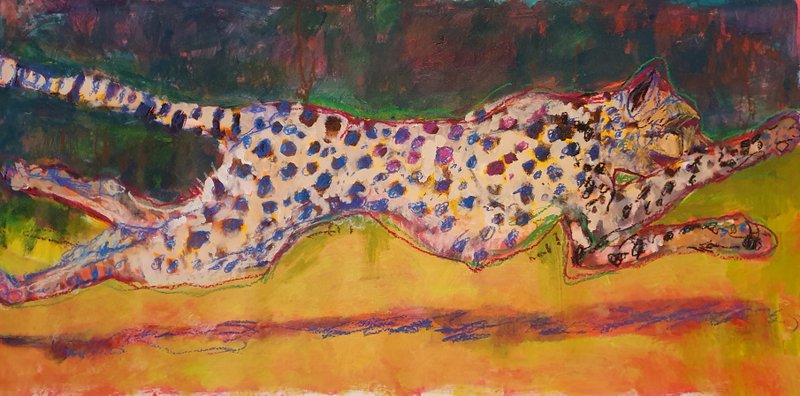Dog in Vintage Convertible (commission from September 2014) SOLD
Trees on Boulevard Raspail Laurie Fox Pessemier Acrylic/linen 11 x 14" 28 x 35 cm
Planked Fish Blair Pessemier Acrylic/wood 5 x 13" 12.5 x 33.5 SOLD
Fennel Laurie Fox Pessemier Acrylic/wood 8 x 20" 20 x 50cm SOLD
ARTNOTES: CONVERTIBLE
ARTNOTES: CONVERTIBLE
“Oh, this car is a convertible,” Blair told me, about 20
minutes into our journey. “Well, let’s
put the top down!!!”
It was about 40 degrees and overcast. I turned the heat to the maximum and the
Peugot deposited its roof into the trunk.
“If you’ve got ‘em, smoke ‘em” as Robert, the longshoreman who lived
down the street, used to say. He was
always good for a bag of apples or some other treat that “fell off the ship”.
I could see the trees and tops of buildings, birds flying
overhead and feel the cool air, REALLY cool.
Harika was shocked and pleased:
what dog wouldn’t want a car
without a roof? We laughed and hooted
and hollered and we made our way to the beach.
We drove to le Touquet-Paris Plage, after a false start in
another direction. When you are in a
convertible, everything is fun. I
hadn’t been to le Touquet in many years.
It is a town of very classic turn of the century homes, a la Victoriana,
surrounded by pines. It is near the
mouth of the river Somme, where so much of WWI took place. It is the most birdy section of the English
channel, at least this side. We saw
great avian varieties in the tidal pools formed on the enormously long beach.
The sand there is the best
in France, I believe. It is soft and
silky, small granules, almost white. Harika dug a hole twice her own size. We ran and played, ate lunch in a brasserie
which made its own fresh fish in butter.
Then we took a short nap on the sand while Harika stood guard.
We had originally planned to go to Matisse’s house first, in
le Cateau-Cambresis, but once I knew we had a convertible, the beach was the
destination. I originally thought the
museum was on the way (I am terrible with maps and directions), but in fact it
was two hours from le Touquet. We went
anyway.
Matisse grew up in a gritty, fabric-producing town, in the
Cambrai region. His grandparents were
weavers, and Henri Matisse worked in the industry in his formative years. It was so obvious when I saw the pattern
cards he had made as a young man, and his large cutouts of later years.
Matisse kept a great collection of fabrics all his life, as seen as his
paintings from Morocco, and France. There
was a great awakening when he went to Tahiti in the 1930s, in the footsteps of
Gaugin. It was here he learned to see
“through water”.
There were tapestries he had designed and made, as well a
those designed by Dufy and others.
We hopped back in the car at 5:45, by this time needing to
put the roof up. We drove home to Paris,
like we’d been on a week long excursion.
Laurie and Blair PESSEMIER




